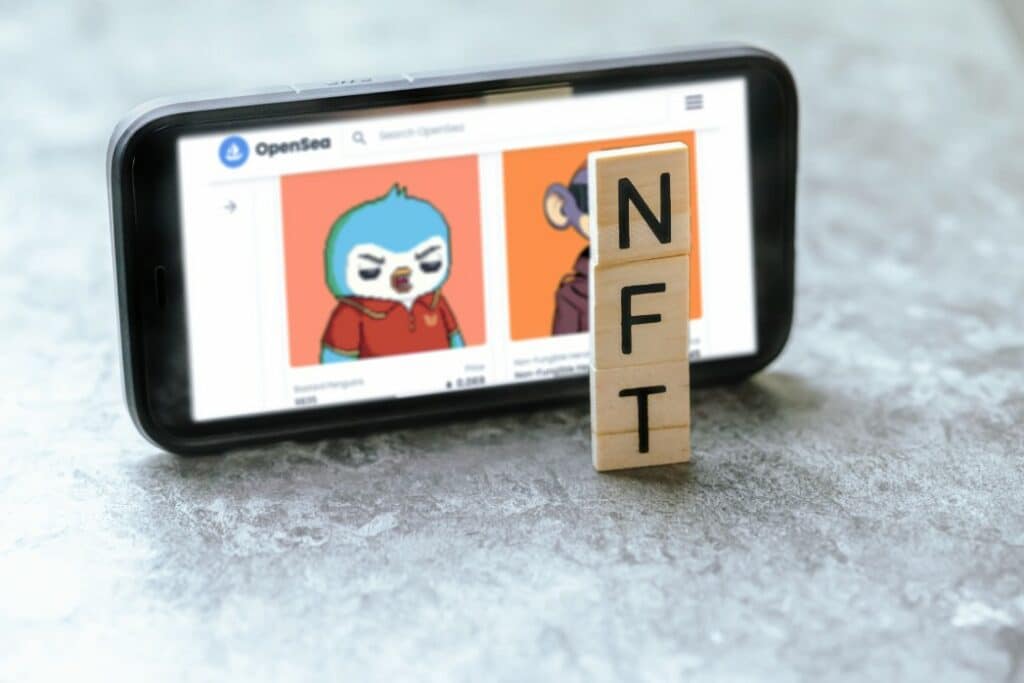The past few months have seen NFTs making waves all over the place. It’s hard to imagine not hearing reference to them in one form or another. Even though you’ve heard of them, it can be difficult to understand exactly what they are. The concept sounds complicated, especially with all the associated tech jargon surrounding them. Today, we will break down the basics of NFTs, and how they work so the next time the subject comes up, you can consider yourself informed.

What Is an NFT and How Do They Work?
The abbreviation NFT stands for non-fungible token. Fungible means an object is freely replaceable or exchangeable. Therefore, non-fungible is the opposite. The “token” part refers to the digital object that cannot be replaced or exchanged, or in other words, authentic and original. In its essence, an NFT is a digital token that is unique and original and worth whatever the demand determines.
Think of a famous artist, such as Picasso or Vincent van Gogh. For serious art collectors, owning the original artwork is nearly priceless, whereas average individuals are usually happy to purchase a postcard or a frameable print copy. NFTs allow investors and consumers to purchase original digital works with proof provided not by a bill of sale but by a blockchain of data.
How does a Blockchain Work?
A blockchain is a system of storing data digitally that is permanent, chronological, and transparent. Rather than recording transactions in a spreadsheet or centralized database, blockchains use a decentralized network to verify and hold data chains. Think of it sort of like a beaded necklace. Data is recorded in blocks that hold a certain capacity. When one block, or bead, fills up, it locks into place, and the next one is threaded into place. When the next block or bead fills up, another comes along, and the process continues.
Blockchains are considered secure database systems because every transaction and alteration is viewable to the public, making it nearly impossible to alter, hack, or delete. The data is housed in a decentralized way on many computers around the globe. This decentralized setup prevents any single person or group from taking control. And because each block is in chronological sequence with a timestamp on it, the data contained in each block is readily verifiable. Due to the sequential system of blockchains, they are primarily used for digital ledger transactions, cryptocurrencies, and NFTs.
NFT Drops and Art Marketplaces
Nearly anything can be turned into an NFT, but the crypto market seems to favour art as the hot current art seller. Everyone from artists to musicians to brands and celebrities is trying to cash in on the NFT craze. When a creator has a new NFT project ready to sell or a series of NFTs for sale, it’s called an NFT drop. It’s a term reminiscent of the days when new records or CDs would drop. The creator drops their NFT on an NFT platform or an NFT art marketplace and waits for buyers to browse their work and make a purchase.
In some cases, NFT art can sell within minutes. In other scenarios, an NFT can sit in the marketplace for days and weeks or never sell at all. The latter scenario is similar to how a gallery in the physical world operates.
Are NFT Projects Worth Your Time?
So, as a business owner, are NFT projects worth your time investing in or creating? It all depends on what you hope to get out of it. If you’re a digital creator or an artist, sure, the NFT art marketplace may be the space for you. If you’re not participating in the art industry already, then NFT investing might be more of a personal venture than a business one. The longevity of the trend is yet to be seen.
Cyber Security Firm in Edmonton
Alt-Tech Inc. is your cyber-security and IT management firm in Edmonton, Alberta. We provide services at all levels for small and medium-sized businesses who need a hand with technology solutions. Contact us today to see how we can help you.

